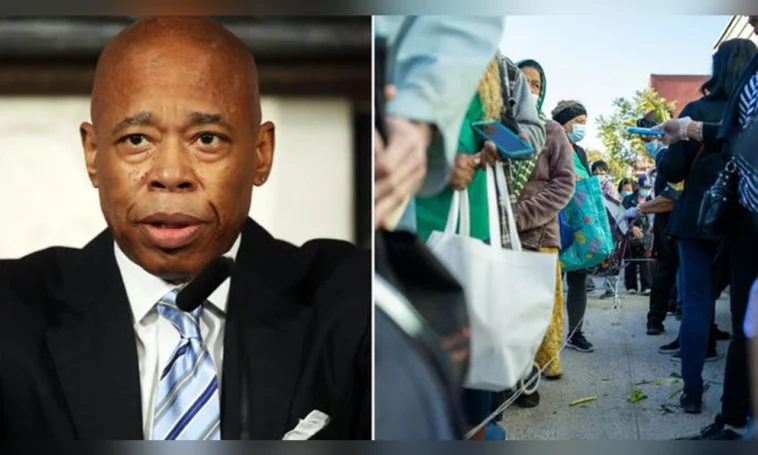NYC is spending $53 million on prepaid debit cards for immigrants.The socio-economic landscape of New York City reflects a complex interplay of factors, ranging from demographic disparities to policy responses aimed at addressing both domestic and humanitarian concerns.
As the city grapples with the aftermath of the COVID-19 pandemic, the issue of poverty has come to the forefront, underscoring the need for comprehensive solutions to uplift vulnerable communities and foster inclusive growth.
The recent study by Columbia University and Robin Hood sheds light on the profound challenges facing New York City’s residents, revealing a stark increase in poverty rates compared to previous years. The statistics paint a concerning picture: nearly two million residents, representing 23% of the city’s population, struggled to afford necessities such as housing and food in 2022.
Perhaps most alarming is the rise in child poverty, with one in four children now living below the poverty line. These figures underscore the urgent need for targeted interventions to support families and mitigate the impacts of economic hardship, particularly among the most vulnerable segments of society.
“Pandemic-era policies stabilized life for many, but as benefits expired, hardship and poverty became more widespread,” the report states.
The root causes of poverty in New York City are multifaceted and interconnected. While the pandemic exacerbated existing inequalities, structural issues such as soaring rent prices, historically elevated levels of inflation, and limited access to affordable healthcare and education have long plagued marginalized communities.
Moreover, disparities along racial and ethnic lines further exacerbate economic inequities, with Asian, Black, and Latino New Yorkers disproportionately affected by poverty compared to their white counterparts.
These disparities underscore systemic barriers to economic mobility and highlight the need for inclusive policies that address the underlying drivers of inequality.
Against this backdrop, the influx of migrants into New York City presents both challenges and opportunities. Mayor Eric Adams’ decision to allocate $53 million in prepaid credit cards to migrant families reflects the city’s commitment to humanitarian assistance, yet it also raises questions about resource allocation and long-term sustainability.
The provision of financial support to migrants, while a necessary short-term measure, must be accompanied by comprehensive integration strategies that promote economic self-sufficiency and social inclusion.
Moreover, the allocation of taxpayer funds to support migrants has sparked debate among residents grappling with their economic hardships, underscoring the delicate balance between humanitarian aid and domestic priorities.
Central to addressing poverty in New York City is the need for collaborative, community-driven solutions that empower individuals and families to overcome systemic barriers. This requires a holistic approach that combines targeted social services with efforts to expand economic opportunities and access to affordable housing.
Investments in education, workforce development, and healthcare are critical components of any poverty alleviation strategy, as they not only provide immediate relief but also pave the way for long-term economic stability and social mobility.
At the same time, fostering collaboration between government, philanthropic organizations, and community stakeholders is essential to maximize the impact of anti-poverty efforts. By leveraging resources and expertise from diverse sectors, cities like New York can develop innovative solutions tailored to the unique needs of their communities.



Join the Community and Be a Part of the Conversation
You must be logged in or registered to post a comment.